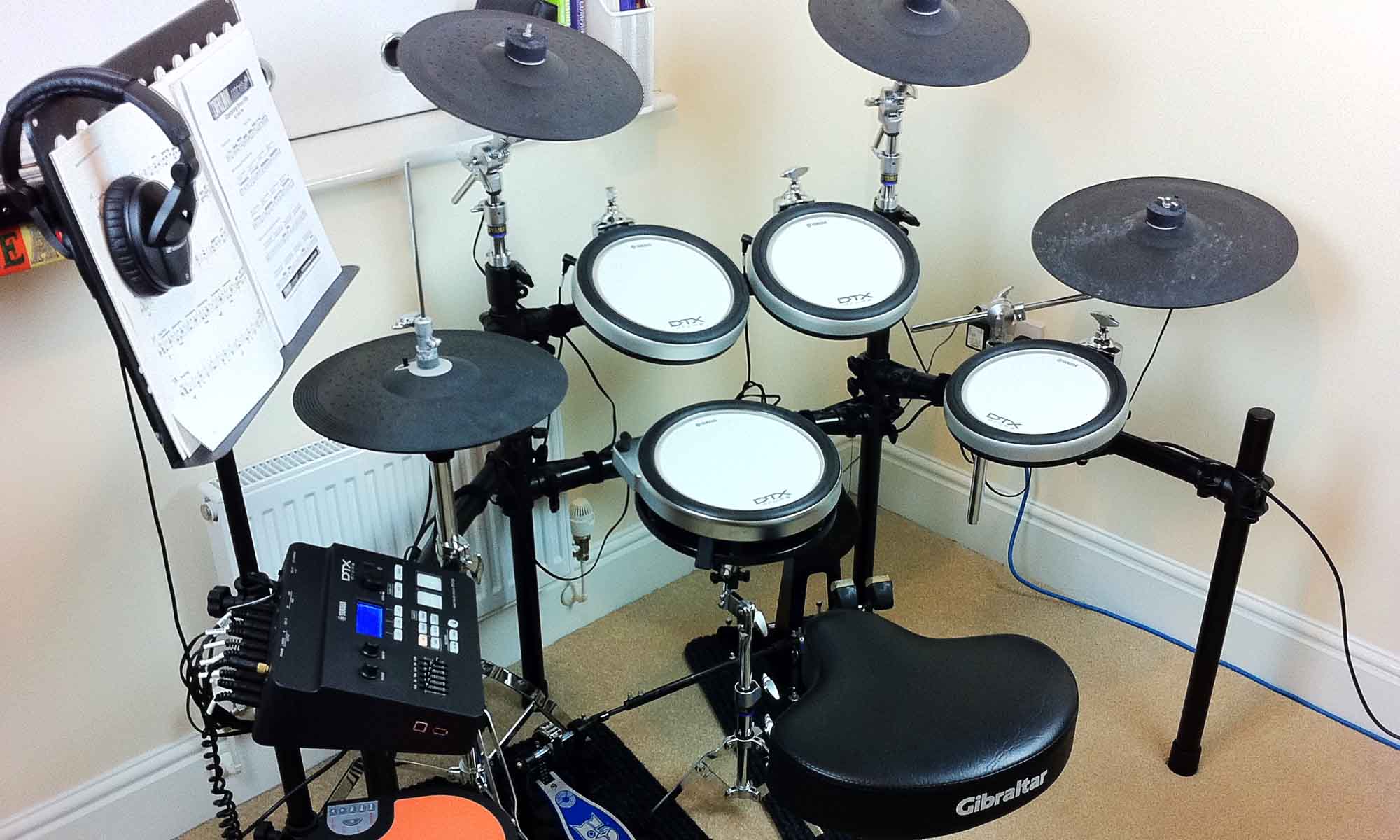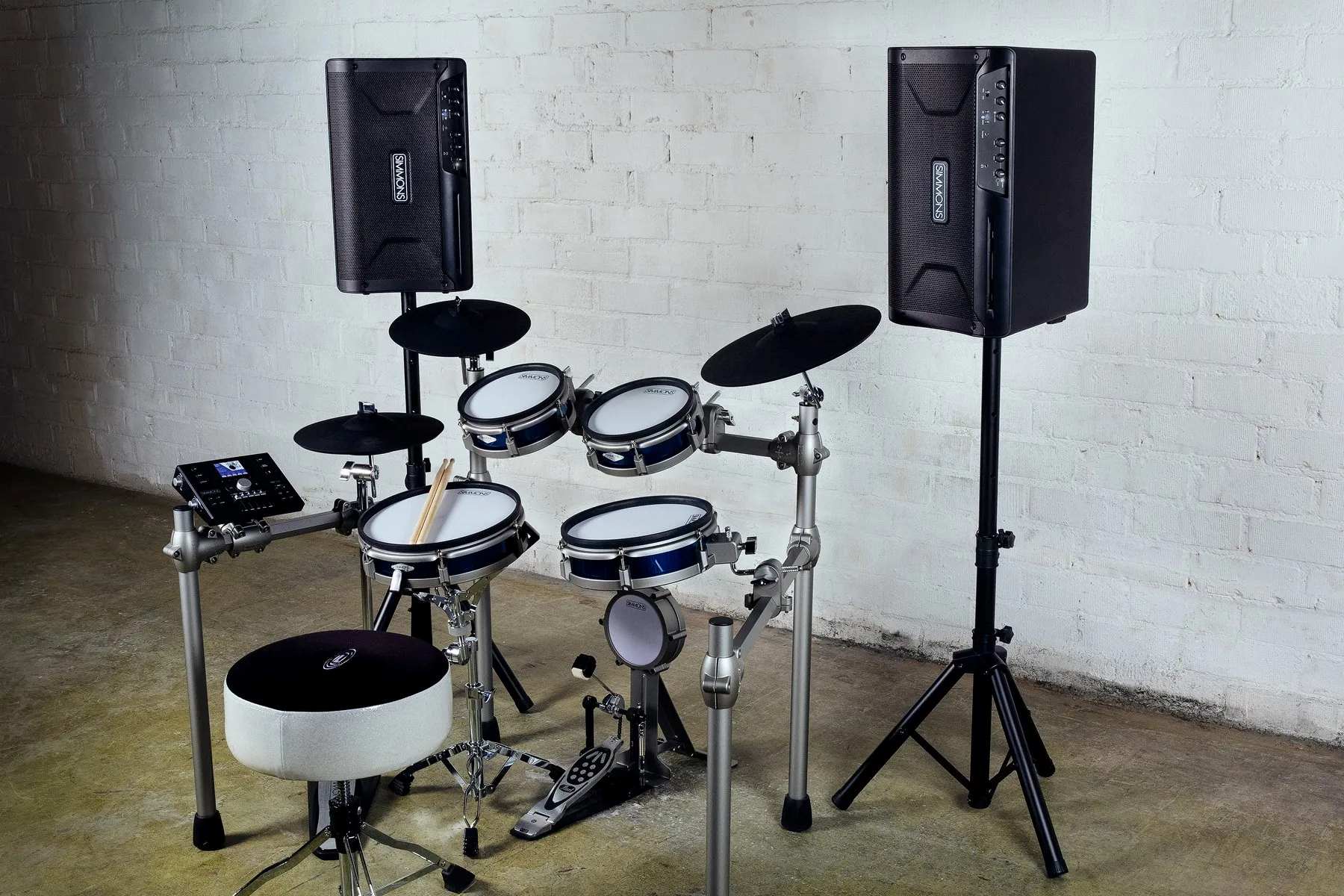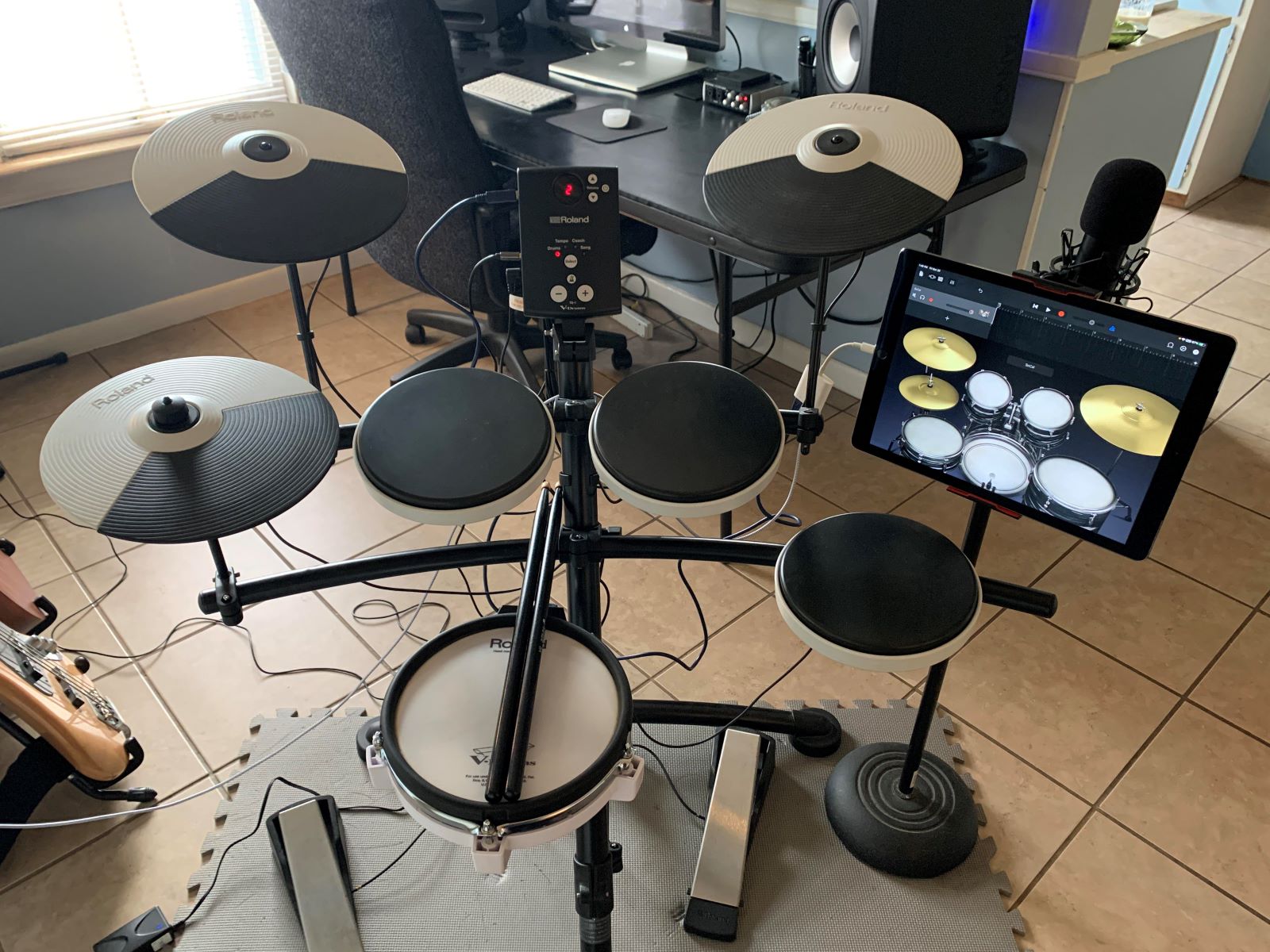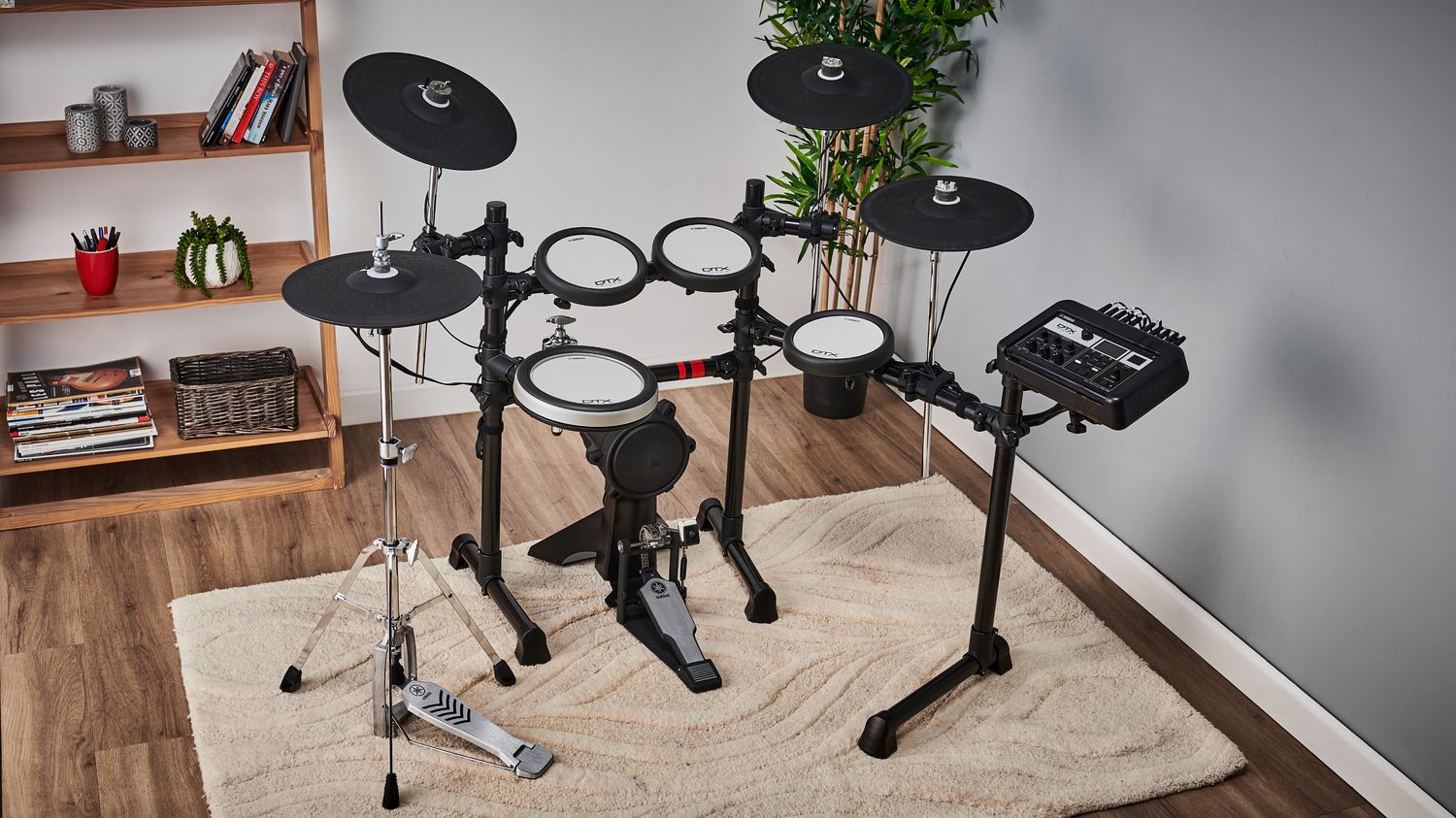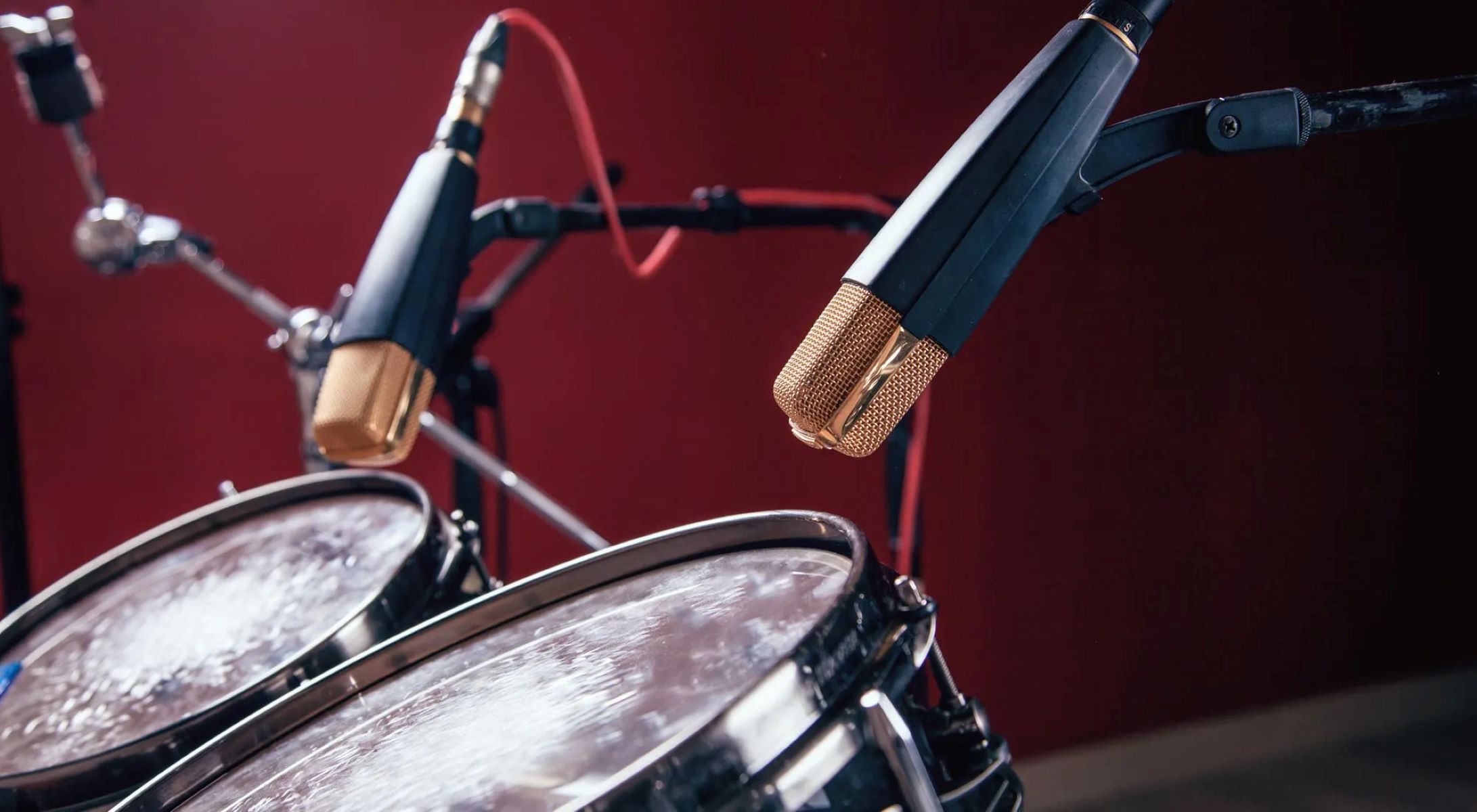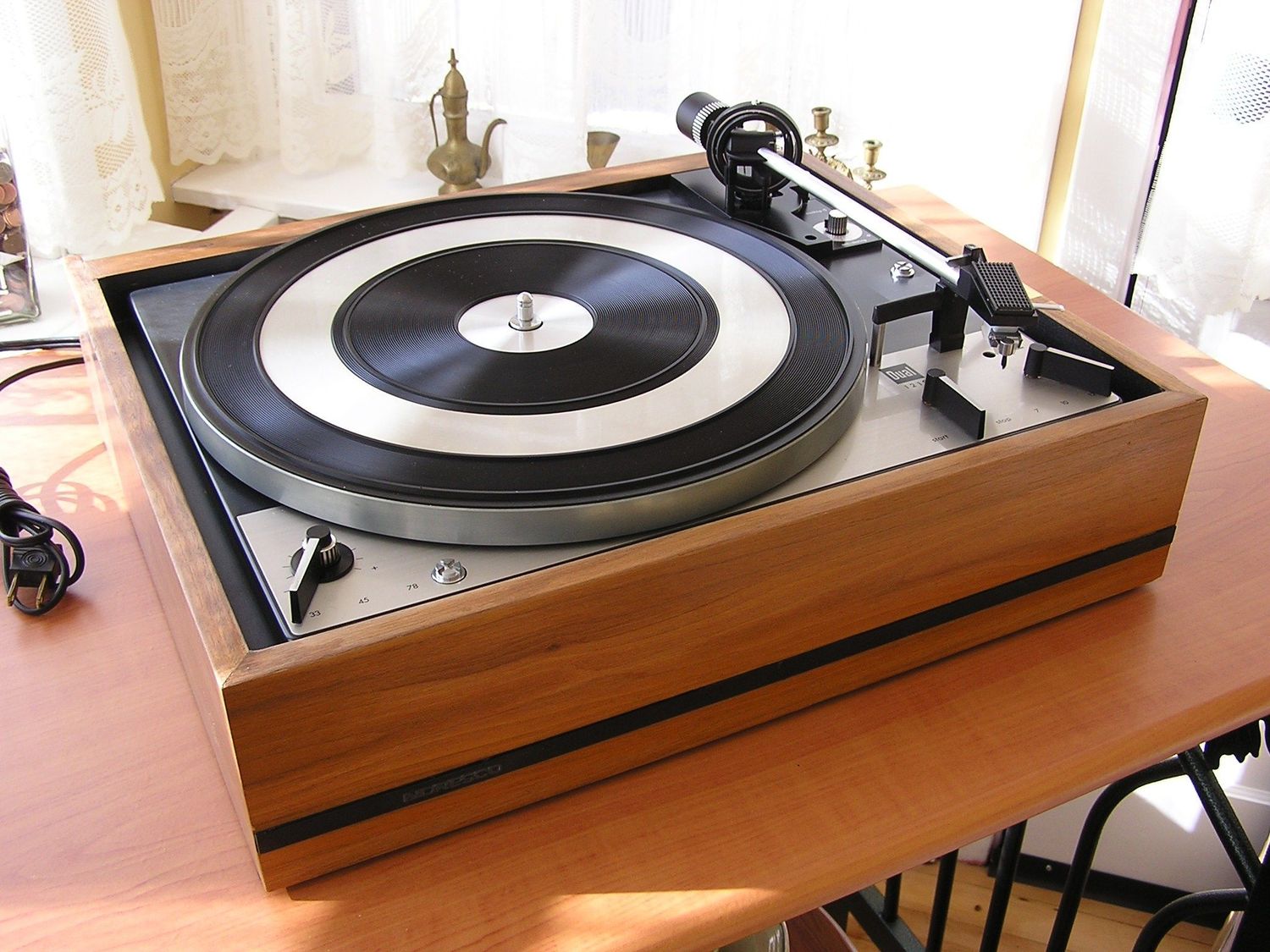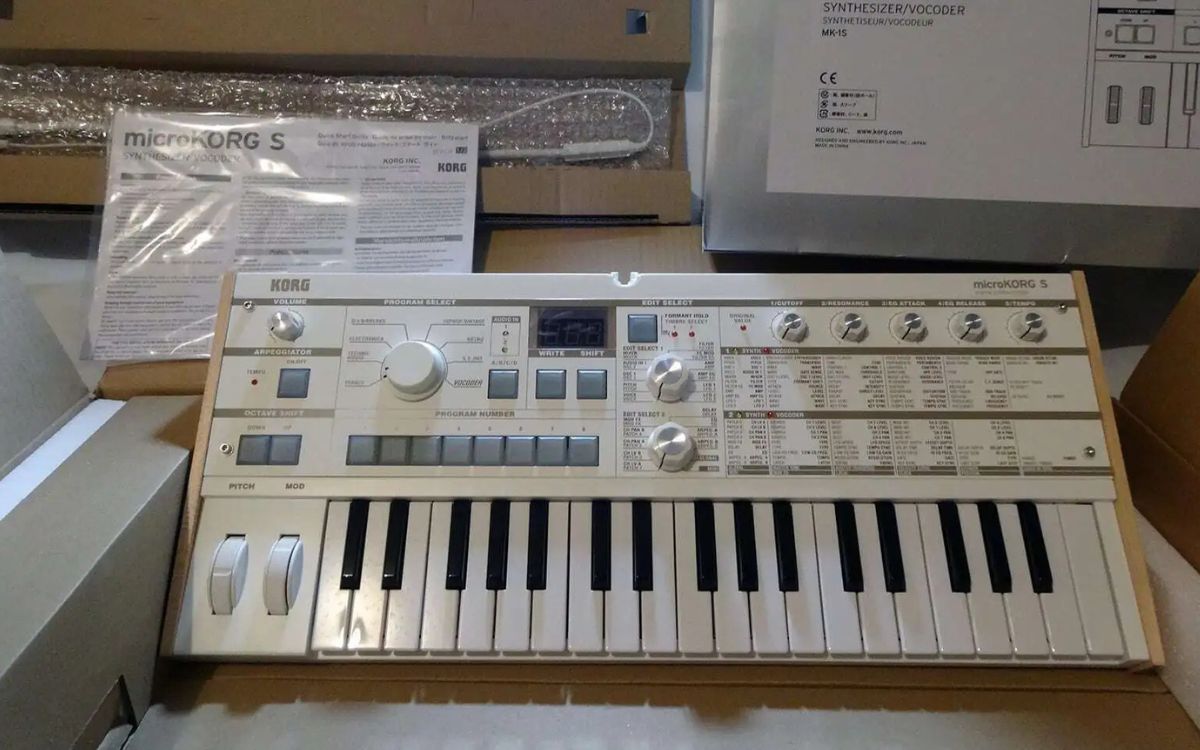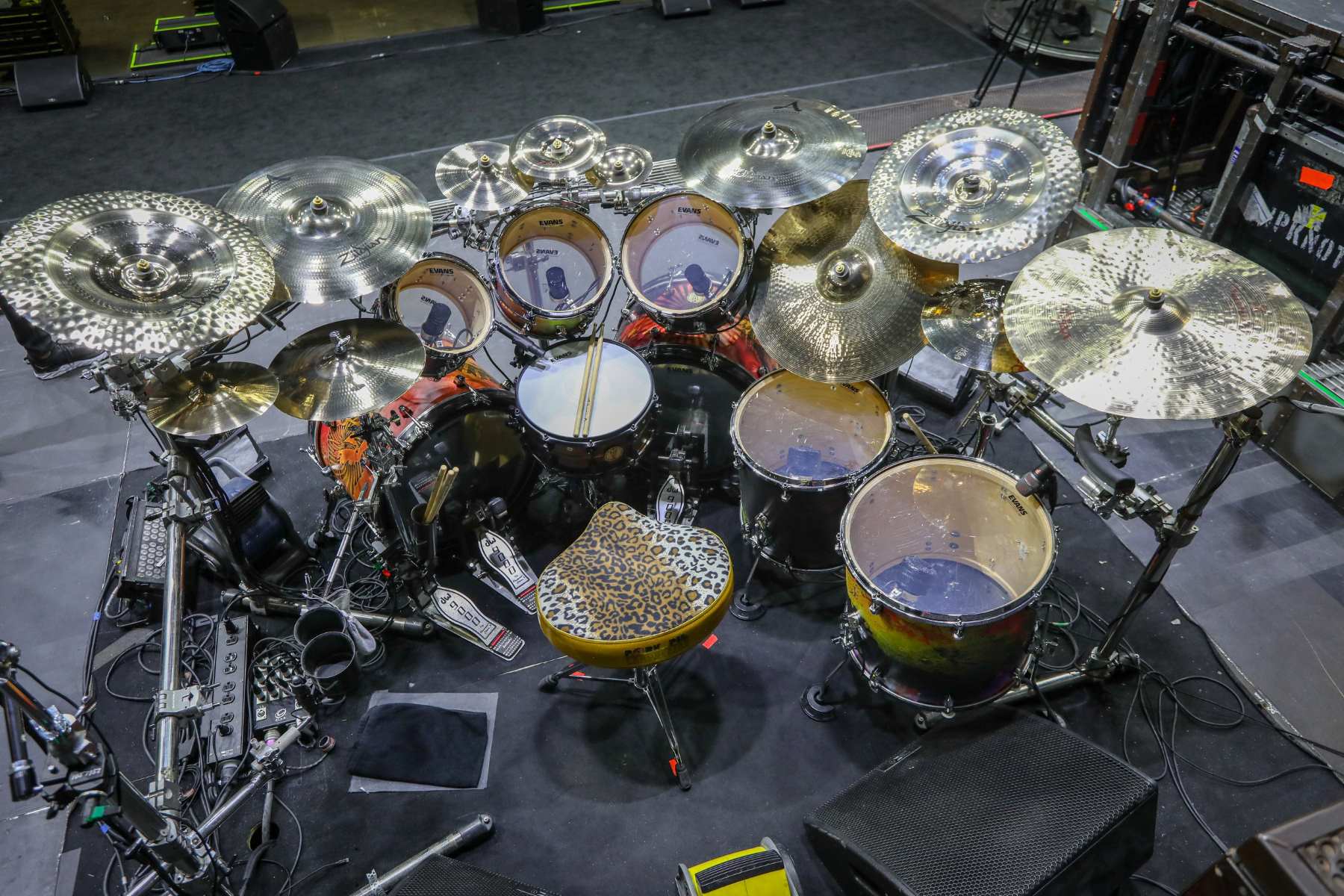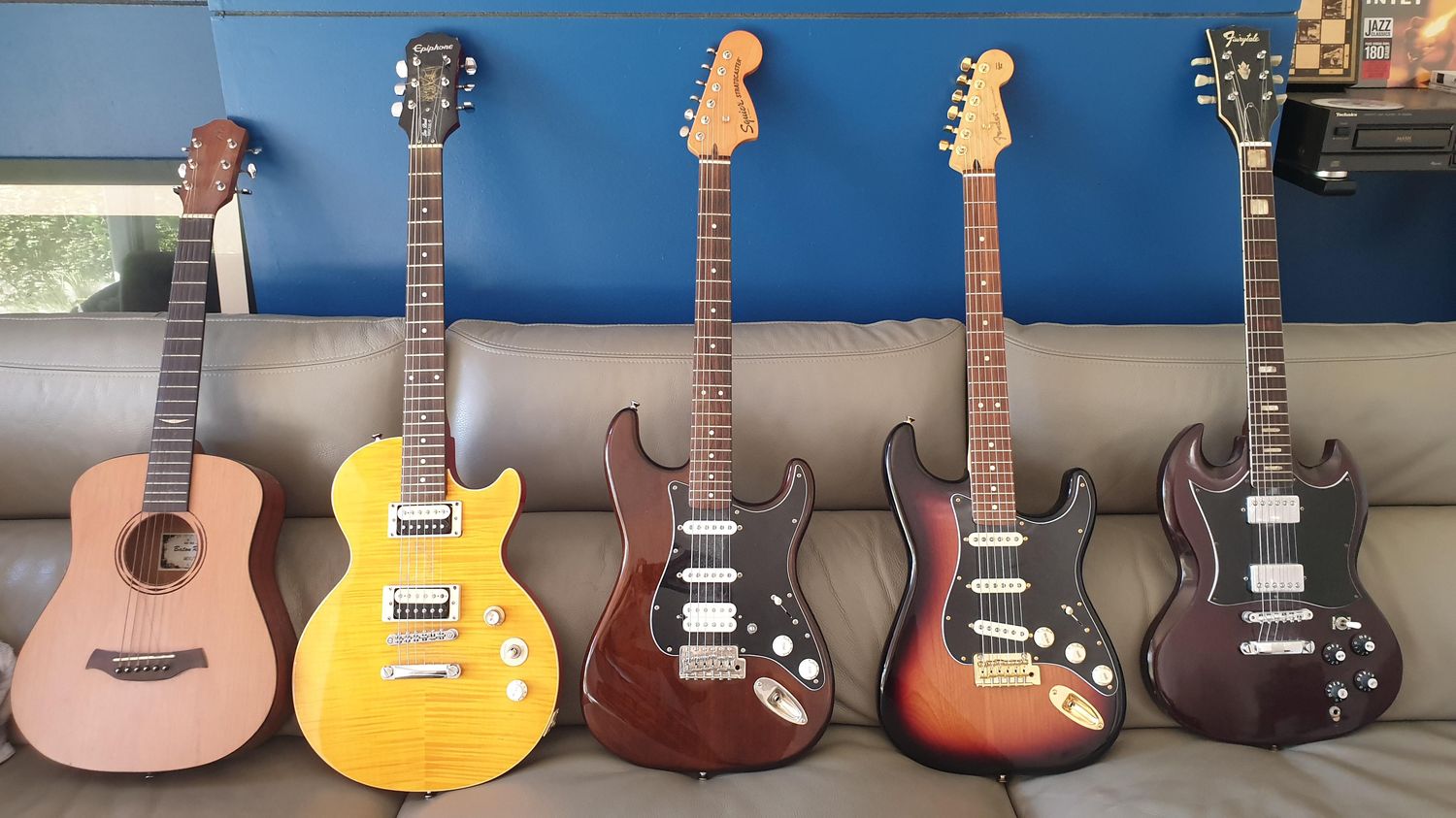Home>Instruments>Drums>What Type Of Drumsticks To Use For Electronic Drums
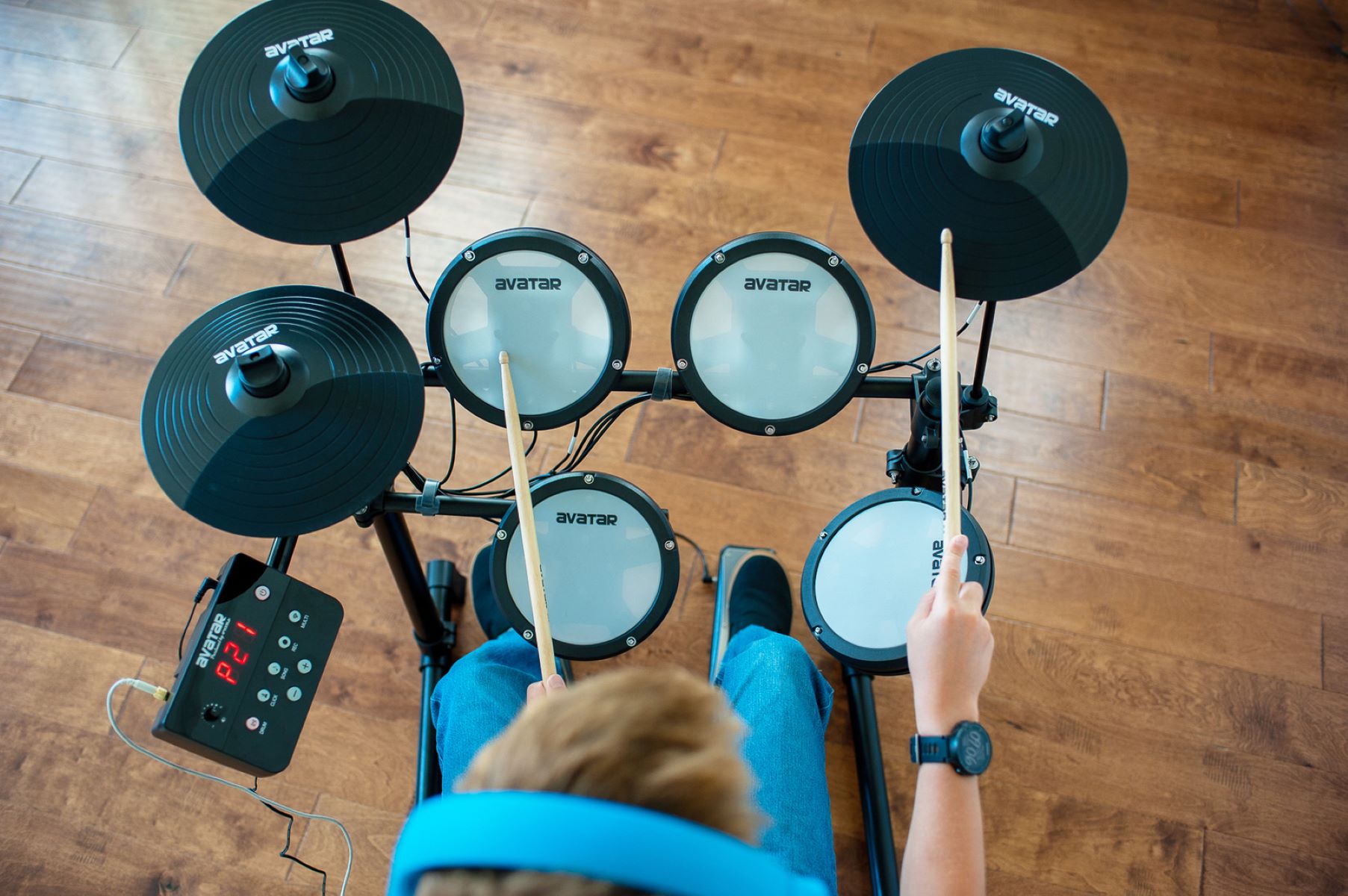

Drums
What Type Of Drumsticks To Use For Electronic Drums
Published: February 8, 2024
Discover the best drumsticks for electronic drums and enhance your drumming experience. Find the right type of drumsticks for your electronic drum kit.
(Many of the links in this article redirect to a specific reviewed product. Your purchase of these products through affiliate links helps to generate commission for AudioLover.com, at no extra cost. Learn more)
Table of Contents
Introduction
Understanding Electronic Drums
Electronic drums have revolutionized the music industry, offering a versatile and dynamic alternative to traditional acoustic drum kits. These modern instruments utilize electronic sensors or pads to produce sound, which can be amplified through a connected speaker or headphones. Unlike acoustic drums, electronic drum kits allow for silent practice and offer a wide range of customizable sounds, making them ideal for both beginners and experienced drummers. However, to fully harness the potential of electronic drums, it's crucial to select the right drumsticks tailored to their unique characteristics.
In this comprehensive guide, we will delve into the intricacies of choosing the most suitable drumsticks for electronic drums. By understanding the importance of this selection and exploring the various factors to consider, drummers can optimize their playing experience, achieve superior sound quality, and prolong the lifespan of their electronic drum kit.
Stay tuned as we navigate through the realm of drumsticks, shedding light on the intricacies of this essential component for electronic drumming. Whether you're a seasoned drummer seeking to adapt to electronic drums or a novice exploring the world of percussion, this guide will equip you with the knowledge to make informed decisions and elevate your drumming prowess.
Understanding Electronic Drums
Electronic drums, also known as digital drums or e-drums, have transformed the landscape of percussion instruments. Unlike traditional acoustic drum kits, electronic drums rely on electronic sound synthesis to produce a wide array of tones and effects. These instruments typically consist of rubber or mesh drum pads equipped with integrated sensors, which detect the impact of drumsticks and trigger the corresponding sounds.
One of the defining features of electronic drums is their versatility. Drummers have the flexibility to customize their sound by selecting from a vast library of digital samples, ranging from classic acoustic drum tones to modern electronic beats. This adaptability allows for seamless integration into various musical genres, making electronic drums a popular choice for studio recordings, live performances, and practice sessions.
Furthermore, electronic drums offer practical advantages, such as the ability to practice silently using headphones. This feature is particularly valuable for drummers living in urban environments or shared spaces, where traditional drumming may cause disturbances. Additionally, electronic drum kits often incorporate features like built-in metronomes, practice tracks, and recording capabilities, empowering drummers to hone their skills and unleash their creativity.
Another key aspect of electronic drums is their portability and compact design. Unlike bulky acoustic drum sets, e-drums are generally more lightweight and space-efficient, making them an appealing option for musicians with limited room for equipment or those frequently on the move.
Despite these advantages, electronic drums present unique challenges and considerations, especially when it comes to selecting the appropriate drumsticks. The distinctive nature of electronic drum pads and the electronic sound generation process necessitate a tailored approach to choosing drumsticks, ensuring optimal performance and longevity of the equipment.
As we delve deeper into the realm of electronic drumsticks, it’s essential to grasp the fundamental characteristics and capabilities of electronic drums. By understanding the intricacies of these innovative instruments, drummers can make informed decisions when selecting the most suitable drumsticks to complement their electronic drumming experience.
Importance of Choosing the Right Drumsticks
When it comes to electronic drums, the significance of selecting the appropriate drumsticks cannot be overstated. The right drumsticks are essential for achieving optimal performance, preserving the integrity of electronic drum pads, and unlocking the full potential of these modern percussion instruments.
First and foremost, choosing the right drumsticks for electronic drums directly impacts the player’s comfort and technique. The weight, length, and tip shape of drumsticks significantly influence a drummer’s playing style and overall experience. Ill-fitting drumsticks can lead to discomfort, hindered dexterity, and even cause muscle strain or fatigue, ultimately impeding the drummer’s ability to express themselves fluidly and accurately.
Furthermore, the selection of drumsticks plays a pivotal role in preserving the condition of electronic drum pads. Unlike traditional acoustic drums, electronic drum pads are typically constructed from sensitive materials such as rubber or mesh. Using inappropriate drumsticks, such as those with sharp tips or excessive weight, can accelerate wear and tear on the pads, compromising their responsiveness and longevity. By choosing drumsticks specifically designed for electronic drums, drummers can mitigate the risk of damage and ensure the prolonged functionality of their equipment.
Moreover, the right drumsticks are instrumental in optimizing the sound quality and articulation of electronic drums. Each type of drumstick produces distinct tonal characteristics when striking electronic drum pads, influencing the clarity, dynamics, and resonance of the generated sounds. By selecting drumsticks that complement the electronic drum kit’s capabilities, drummers can achieve a more nuanced and expressive performance, harnessing the full spectrum of sonic possibilities offered by these innovative instruments.
Additionally, the choice of drumsticks directly impacts the overall user experience and satisfaction with electronic drums. Well-suited drumsticks enhance the responsiveness and playability of electronic drum pads, empowering drummers to execute intricate patterns and techniques with precision and finesse. This, in turn, cultivates a more immersive and enjoyable playing environment, fostering creativity and musical exploration.
In essence, the importance of choosing the right drumsticks for electronic drums extends beyond mere convenience; it encompasses ergonomic considerations, equipment maintenance, sound quality optimization, and overall player satisfaction. By recognizing the pivotal role of drumsticks in the realm of electronic drums, drummers can make informed decisions that elevate their performance and enrich their musical journey.
Factors to Consider When Choosing Drumsticks for Electronic Drums
When venturing into the realm of electronic drums, selecting the right drumsticks involves a thoughtful evaluation of several key factors. By considering the following aspects, drummers can make informed decisions that align with their playing style, equipment specifications, and sonic preferences, ultimately enhancing their electronic drumming experience.
1. Material and Construction
The material composition and construction of drumsticks significantly impact their performance on electronic drum pads. Opt for drumsticks made from materials that are gentle on electronic drum surfaces, such as nylon tips or softer wood varieties. Additionally, consider the durability and resilience of the drumsticks to ensure they can withstand prolonged use without compromising the integrity of the electronic drum pads.
2. Weight and Balance
Choosing drumsticks with an appropriate weight and balance is crucial for achieving optimal control and comfort during electronic drumming sessions. Lighter drumsticks may offer enhanced agility and reduced fatigue, while heavier options can provide a more pronounced impact and projection. Strike a balance that suits your playing style and minimizes strain on your hands and wrists.
3. Tip Shape and Texture
The shape and texture of the drumstick tips play a pivotal role in producing varied tones and articulations on electronic drum pads. Consider the impact of different tip shapes, such as round, barrel, or acorn, on the responsiveness and sound quality of the electronic drum pads. Additionally, evaluate the texture of the tips to ensure they complement the surface material of the drum pads, promoting consistent triggering and minimal wear.
4. Length and Diameter
The length and diameter of drumsticks contribute to the overall feel and maneuverability when playing electronic drums. Longer drumsticks may offer extended reach and leverage, while shorter options can enhance precision and control. Evaluate the dimensions that align with your physical comfort and playing technique, taking into account the layout and configuration of your electronic drum kit.
5. Sound Characteristics
Consider the sonic properties and tonal characteristics of different drumstick models when selecting them for electronic drums. Certain drumsticks may produce brighter, sharper sounds, while others deliver warmer, mellower tones. Experiment with various options to discern their impact on the overall sound palette of your electronic drum kit, aiming to achieve a balanced and versatile sonic range.
By carefully weighing these factors and their implications for electronic drumming, drummers can make informed choices when selecting drumsticks tailored to their specific needs and preferences. This thoughtful approach ensures a harmonious synergy between the drumsticks and electronic drum kit, fostering an enriched and customized playing experience.
Types of Drumsticks for Electronic Drums
When exploring the realm of electronic drums, drummers encounter a diverse array of drumstick options, each offering unique characteristics tailored to the nuances of electronic drumming. By understanding the distinct types of drumsticks available for electronic drums, drummers can make informed choices that align with their playing style, sonic preferences, and equipment requirements. Let’s delve into the various types of drumsticks designed specifically for electronic drums:
1. Nylon Tip Drumsticks
Nylon tip drumsticks are a popular choice for electronic drummers due to their gentle impact on electronic drum pads. The nylon tips minimize wear and tear on the sensitive surfaces of electronic drum pads while offering consistent triggering and precise articulation. These drumsticks are available in a range of weights and tip shapes, catering to diverse playing styles and sound preferences.
2. Multi-Purpose Drumsticks
Multi-purpose drumsticks are designed to accommodate both acoustic and electronic drum kits, offering versatility and adaptability for drummers who navigate between different setups. These drumsticks often feature a balanced weight and tip design that translates well across various percussion instruments, making them a convenient option for musicians with hybrid drumming setups.
3. Lightweight Drumsticks
Lightweight drumsticks are favored by electronic drummers seeking enhanced agility and reduced fatigue during extended practice or performance sessions. These drumsticks are crafted from materials that prioritize maneuverability and comfort, allowing drummers to execute intricate patterns and dynamic gestures with ease while minimizing strain on their hands and wrists.
4. Specialty Electronic Drumsticks
Specialty electronic drumsticks are specifically engineered to optimize the performance and sound quality of electronic drum kits. These drumsticks may incorporate innovative features such as built-in sensors, vibration-dampening properties, or textured grips tailored to the unique demands of electronic drumming. Specialty electronic drumsticks are designed to enhance playability and responsiveness, offering a customized experience for dedicated electronic drummers.
5. Customizable Drumsticks
Customizable drumsticks empower electronic drummers to tailor their playing experience to their exact specifications. These drumsticks may feature interchangeable tips, adjustable weights, or modular components, allowing drummers to fine-tune the characteristics of their drumsticks to complement the sonic capabilities and tactile nuances of their electronic drum kits.
By acquainting themselves with these distinct types of drumsticks for electronic drums, drummers can navigate the expansive landscape of options and make informed decisions that harmonize with their artistic vision and technical requirements. Whether prioritizing durability, sonic versatility, or ergonomic comfort, the diverse range of electronic drumsticks caters to the multifaceted needs of modern drummers, empowering them to unleash their creativity and elevate their electronic drumming endeavors.
Conclusion
Embarking on the journey of electronic drumming entails a nuanced understanding of the pivotal role that drumsticks play in shaping the playing experience, sound quality, and equipment longevity. By recognizing the distinctive attributes of electronic drums and the corresponding considerations for selecting drumsticks, drummers can optimize their performance and immerse themselves in the boundless sonic possibilities offered by these innovative instruments.
Choosing the right drumsticks for electronic drums transcends mere convenience; it encompasses a holistic approach to comfort, technique, equipment maintenance, and sonic expression. The careful evaluation of factors such as material, weight, tip shape, and sound characteristics empowers drummers to align their drumstick selection with their individual preferences and playing style, fostering a harmonious synergy between the drumsticks and electronic drum kit.
Moreover, the diverse array of drumstick types tailored to electronic drums offers a spectrum of options, catering to the multifaceted needs and artistic inclinations of modern drummers. Whether prioritizing precision, durability, or sonic versatility, electronic drummers can explore a rich tapestry of drumstick varieties, each contributing to a personalized and immersive drumming experience.
As drummers venture into the realm of electronic drums, armed with the knowledge and insights presented in this guide, they are poised to embark on a musical odyssey characterized by innovation, adaptability, and boundless creativity. The symbiotic relationship between drumsticks and electronic drums serves as a catalyst for artistic exploration, enabling drummers to sculpt captivating rhythms, unleash dynamic performances, and chart new frontiers in contemporary percussion.
In essence, the world of electronic drumming beckons with a symphony of possibilities, and the choice of drumsticks stands as a gateway to unlocking its full potential. By embracing the nuances of electronic drumsticks and their profound impact on the electronic drumming landscape, drummers equip themselves with the tools to embark on a transformative musical voyage, where innovation and expression converge to shape the future of rhythm and melody.

